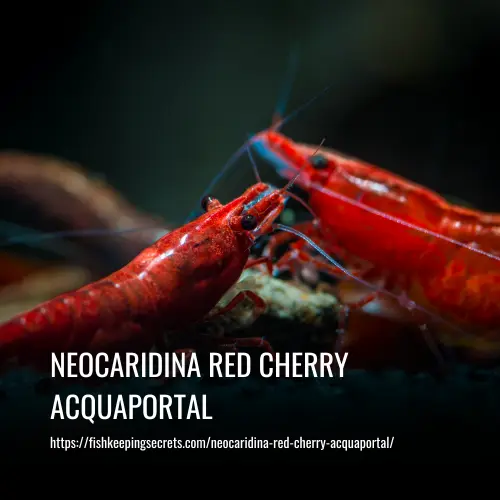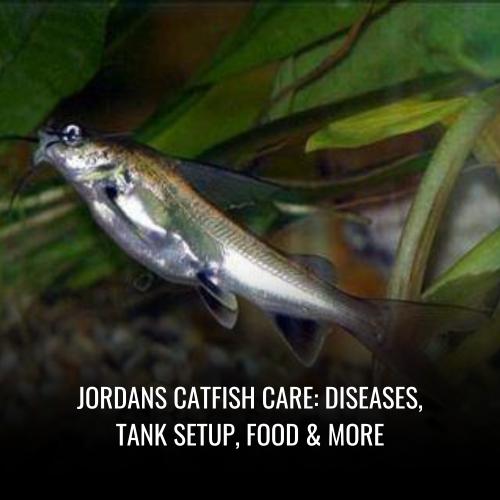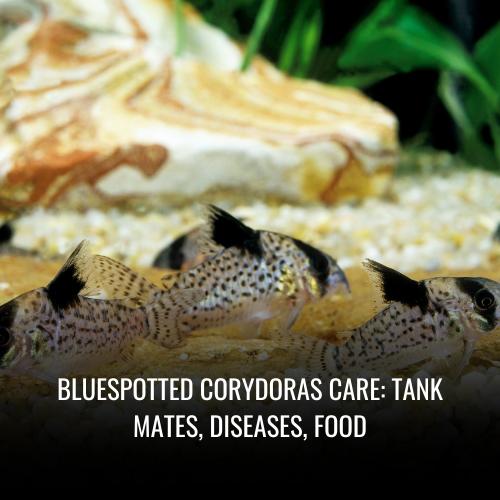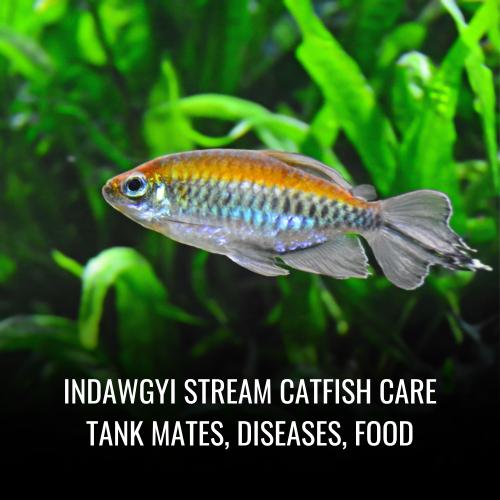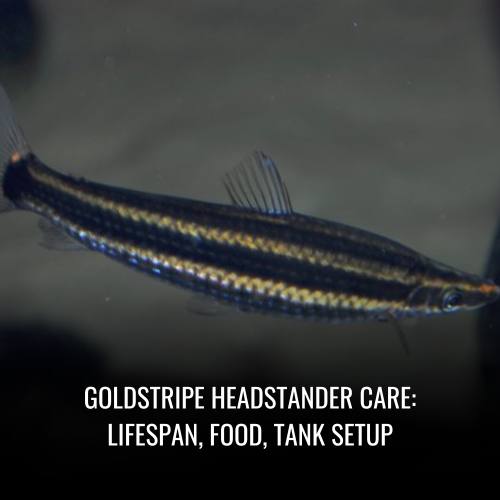Salmontail catfish Care: Tank Mates, Size, Diet & Setup
This post contains affiliate links. As an Amazon Associate, we earn from qualifying purchases.
These Aussie monster fish exhibit nocturnal tendencies, often seen gliding across the tank after dark. Despite their peaceful behavior, careful handling is paramount due to their sharp spines and irritating mucus. They prove challenging for breeding, often necessitating advanced fishkeeping expertise.
Due to their peculiarities and potential size, they are not recommended for beginners but rather for those equipped with the right fish illustartion, knowledge, and resources to manage such magnificent creatures.
Table: Salmontail Catfish Profile
| Attribute | Information |
|---|---|
| Scientific name | Cnidoglanis macrocephalus |
| Common name | Salmontail Catfish |
| Family | Ariidae |
| Usual size in fish tanks | Up to 24 inches |
| Recommended pH range | 6.5 – 7.5 |
| Recommended water hardness | 5 – 15 dGH |
| Recommended temperature | 72°F – 79°F |
| Reproduction | Challenging breeding, often necessitating advanced fishkeeping expertise |
| Origin | Australia |
| Temperament to its own species | Peaceful |
| Temperament toward other fish | Peaceful |
| Usual place in the tank | Bottom-dweller |
| Lifespan | 10 – 15 years |
| Tank size requirement | 100 gallons or larger |
| Filtration system | Strong filtration recommended |
| Sexual dimorphism | Males may be larger |
| Substrate cleaning | Regular cleaning necessary |
Scientific Name
The Salmontail Catfish is an intriguing species with a nomenclatural history as rich as its natural habitat. While its widely accepted scientific name is Arius graeffei, it is also known within the scientific community as Neoarius graeffei. These names reflect its membership in the family Ariidae. But that’s not the only title it holds; some scientists refer to this species as Arius leptaspis or under the associated species Hexanematichthys leptaspis.
Understanding the fluidity of scientific nomenclature is essential when diving into the depths of fish taxonomy. Here is a concise list of the scientific names attributed to the Salmontail Catfish:
- Arius graeffei
- Neoarius graeffei
- Arius leptaspis
- Hexanematichthys leptaspis
Each name offers a glimpse into the fish’s complex classification and underscores the dynamic nature of scientific discovery.
Average Size
The Salmontail Catfish, scientifically known as Arius graeffei, exhibits a range of sizes that owe to its habitat and lifestyle. Typically, the average adult measures between 10 and 12 inches, a size that comfortably positions it among medium-sized freshwater fish. Some individuals, however, surpass this bracket and reach a more significant length of up to 16 inches, which could be a reflection of abundant food sources and optimal environmental conditions.
Juveniles start their journey much smaller, with lengths of approximately 4 to 6 inches. The growth trajectory of these fish from youthful swimmers to matured specimens is a testament to their adaptability and resilience in diverse aquatic environments.
It’s notable that the Salmontail Catfish’s ultimate size is not merely a function of age but is also intricately tied to diet and habitat conditions, such as water quality and space availability. Areas with cleaner water and ample space often yield larger fish, showcasing how important a healthy ecosystem is for their development.
Salmontail Catfish Size Overview:
- Average adult size: 10-12 inches
- Larger adults: Up to 16 inches
- Juvenile size: 4-6 inches
- Influencing factors: Diet, habitat quality, space
Lifespan
The Salmontail Catfish, also known as Arius graeffei or Neoarius graeffei, boasts a notable lifespan that enriches home aquariums and natural waterways alike. In captivity, these robust creatures can live for 8 to 10 years with the right care, illustrating the importance of a dedicated approach to maintaining their environment.
Key to ensuring a lengthy life for these Australians, sometimes referred to as “Aussie monster fish,” is the trio of a proper diet, pristine water conditions, and spacious aquariums. It’s a delicate balance between feeding them nutritious fish food silhouettes and mimicking the brackish conditions they’re accustomed to in the wild.
In their natural habitats, however, their lifespan can fluctuate due to threats like predation or environmental instability. This underscores the significance of preserving their ecosystems, both in the wild and domestically.
Aquarists focusing on quality water management and efficient stress reduction will see their efforts rewarded with healthier, longer-lived Salmontail catfish. An aquarium that replicates their natural environment, complete with correct pH balance and temperature control, acts as a foundation for well-being.
Quick Facts for Aquarium Success:
- Lifespan: 8-10 years
- Crucial Variables: Diet, water cleanliness, tank size
- Stress Management: Key for longevity
Overall, the Salmontail catfish can become a shining example of aquatic resilience when provided with a thoughtful and well-suited home.
Natural Habitat
The salmontail catfish, scientifically recognized as Arius graeffei or Neoarius graeffei, thrives in the estuarine and freshwater regions of northern Australia, reflecting their remarkable adaptability. Their preferred environments encompass rivers and creeks, particularly those bordered by mangroves conducive to brackish conditions.
Despite their preference for certain water types, the salmontail catfish’s resilience allows them to deal with varying water parameters. Fluctuating salinity levels are within their broad range of tolerances, showcasing their capacity to adapt to diverse and changing aquatic settings.
At nightfall, their behavior shifts; they become more active and leave their shelters in search of nourishment, exhibiting classic hunting patterns distinctive to their species.
Key Habitat Features:
- Estuarine and freshwater systems
- Muddy or sandy substrates
- Abundant vegetative cover
- Salinity-adaptive
- Nocturnal foragers
Appearance
Salmontail catfish, known scientifically as Neoarius graeffei, boast a streamlined body culminating in a distinct forked tail fin. This characteristic fish closely mirrors the caudal fin of a salmon, which is the primary inspiration behind the name “salmontail catfish.” Their body coloration features a gradient from light to dark brown on top, seamlessly transitioning to a paler belly. This mottled patterning serves as excellent natural camouflage within their murky habitat.
Typically, an adult salmontail catfish spans a length of 12-18 inches, though some individuals can surpass this range, making for a striking presence in an aquarium setting with their considerable size and formidable appearance.
| Feature | Description |
|---|---|
| Body Shape | Elongated with a forked tail |
| Coloration | Brown, fading to lighter shades on the underside |
| Sensory Organs | Barbels on the head, ampullary canals on the body |
| Eye Adaptation | Small, adapted to dim light |
| Average Size | 12-18 inches |
Behavior & Temperament
Salmontail catfish are known for their tranquil demeanor and active shoaling behavior, typically manifesting a peaceful temperament that makes them suitable inhabitants for community aquariums. They are social fish that prefer the company of their own kind and exhibit a coexistent nature when sharing space with a diverse range of tank mates.
Their characteristic non-aggressive stance towards other fish is a testament to their placidity, which encourages aquarium enthusiasts to integrate them into sizable, mixed-species tanks.
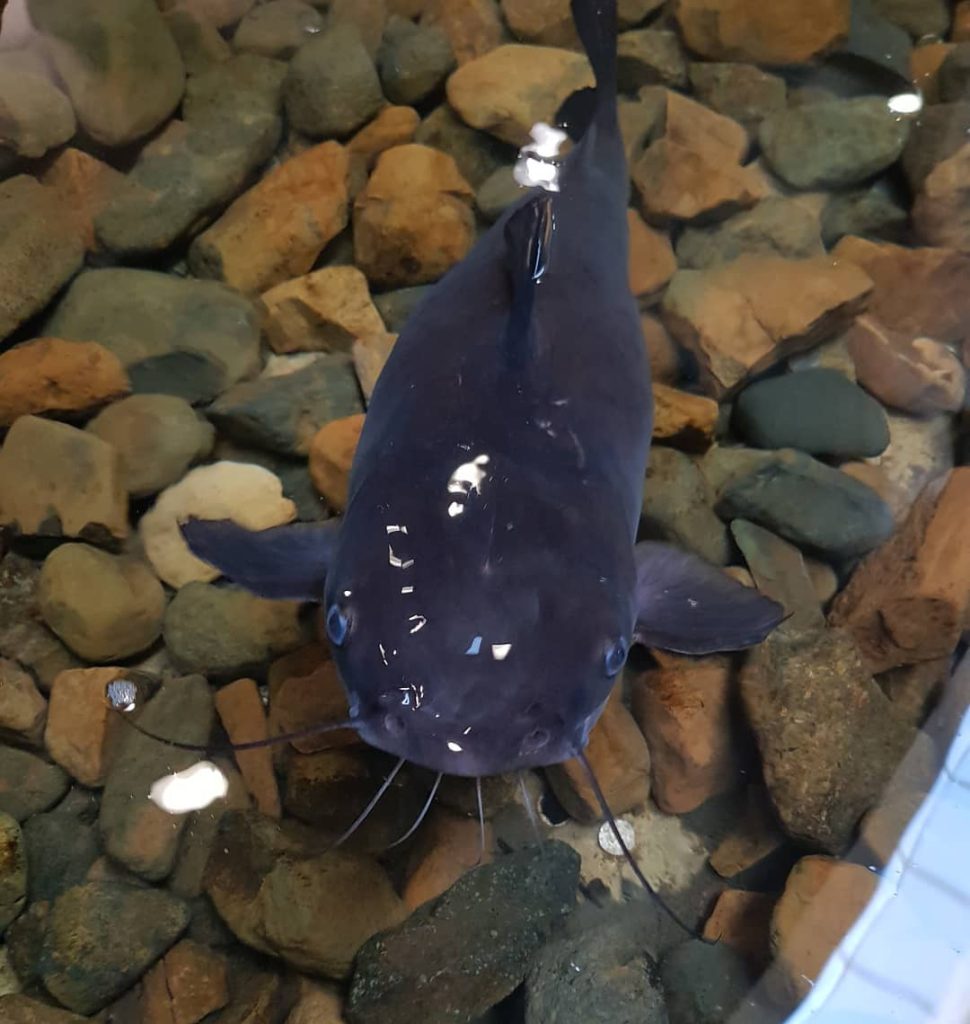
Are Salmontail catfish Fin Nippers?
No, Salmontail catfish do not generally engage in fin nipping. Their diet mainly consists of meaty foods ranging from live or frozen fare to specialized carnivorous pellets—directing their feeding behavior away from the fins of cohabitating species. Moreover, their calm nature reinforces the notion that they are not prone to fin nipping. Observations of their swimming patterns, often up and down the tank, reiterate their passive ways and a tendency towards non-aggressive interactions with tank mates.
Are Salmontail catfish Aggressive To Each Other & Other Fish?
Salmontail catfish maintain a pacific existence among themselves, exhibiting friendly behavior towards conspecifics within the confined space of an aquarium. However, their attitude may shift when it comes to smaller tank mates, particularly those that might fit within their sizable mouths, as they mature. Though equipped with sharp, potentially toxic spines as defensive mechanisms, instances of overt aggression are more a function of predatory instinct rather than interspecific hostility. It is, therefore, crucial to approach the selection of tank mates with consideration for size and compatibility to prevent unwanted incidents.
Are Salmontail catfish Friendly To Each Other & Other Fish?
In terms of interspecies relationships, Salmontail catfish display a convivial temperament towards their own kind when given ample space to roam and congregate. Schooling behavior observed both in the wild and in captivity indicates a proclivity toward peaceful association with conspecifics. Their inherent sociability suggests that while they may view smaller fish as potential prey, they can coexist harmoniously with tank mates of comparable size and peaceful nature, provided the environment caters to their needs.
Are Salmontail catfish Schooling Fish?
Yes, Salmontail catfish exhibit natural schooling behavior, indicative of their social inclination. They are often seen swimming in synchronized groups, finding security and reduced stress within a shoal. It is appropriate to simulate this natural tendency by maintaining them in numbers, which not only aids in their well-being but also contributes to a more animated and balanced tank ecosystem.
Can You Have Just One Salmontail Catfish In The Tank?
While Salmontail catfish can indeed be housed solitarily due to their independent nocturnal activity, their preference for shoaling suggests that a solitary existence might not reflect their natural behavior. A lone individual may fair well in a mixed-species tank; however, the overall benefits of observing a group of Salmontail catfish exhibit their inherent shoaling instincts can be a fascinating and educational aspect for aquarists to consider.
Do Salmontail catfish Need To Be In Groups?
While not an absolute necessity, Salmontail catfish do thrive when kept in groups. Shoaling provides them with a semblance of their wild social structure, comforting security, and a preferable environment for exhibiting natural behaviors. Consequently, aquarists are encouraged to keep them in groups, ideally of three or more, to foster a robust, stress-free community and to unlock the full potential of their dynamic nature within the aquarium.
| Preference | Salmontail Catfish Behavior |
|---|---|
| Solitary or Group Living | Thrive in groups, but can be kept alone |
| Fin Nipping Potential | Unlikely to engage in fin nipping |
| Aggression Levels | Low; passive with similar-sized fish |
| Temperament Towards Others | Friendly to own species and compatible tank mates |
| Schooling Behavior | Natural tendency to school |
| Suitability for Mixed Tanks | Yes, with consideration for size and temperament |
Food & Diet
The Salmontail catfish, scientifically known as Arius graeffei or Neoarius graeffei, stands as a remarkable specimen within the freshwater fish community. With an emphasis on diverse nutritional intake, these carnivorous fish showcase adaptable eating habits in home aquariums. To maintain their health and vitality, a balanced diet encompassing commercial fish foods, live or frozen fare, and blanched vegetables is advised. The inclusion of a variety of items like bloodworms, brine shrimp, and shrimp offers the Salmontail catfish a slice of their natural feeding experience, enriching their lives with essential proteins and nutrients. Furthermore, ensuring these omnivorous creatures receive fiber from vegetables aids their digestive process and overall well-being.
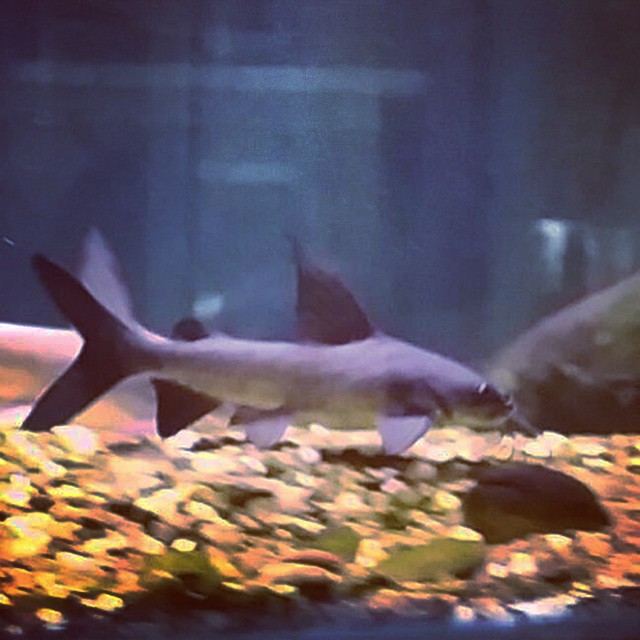
Do Salmontail catfish Eat Algae?
Salmontail catfish do not primarily include algae in their diet, as their carnivorous appetites drive them to seek out meatier options. In their natural riverine environments as well as in captivity, they favor live or frozen foods and specially formulated carnivorous pellets over algae. Instances where these catfish might graze on algae are typically incidental and do not suffice as a significant nutritional source. Providing a diet rich in proteins similar to their natural consumption patterns ensures their well-being and satisfaction.
Do Salmontail catfish Eat Shrimp?
Indeed, shrimp forms an integral part of the Salmontail catfish’s diet. These catfish, with their predatory instincts, hunt and relish shrimp in wild settings and appreciate them as an added variety in captivation. Shrimp not only introduce nutritional diversity but also stimulate the catfish’s natural foraging behaviors. As a rich source of proteins and other crucial nutrients, shrimp facilitate optimal growth and health for these active bottom-dwellers.
Do Salmontail catfish Eat Bloodworms?
Bloodworms are a natural and favored food among the Salmontail catfish’s diet. Offering high protein levels, they are a valuable inclusion for the catfish’s nutritional needs. Feeding habits involving the pursuit and consumption of bloodworms are a delight to observe and replicate the natural feeding behavior of these catfish. As part of their diverse dietary spectrum, bloodworms fulfil a catfish’s carnivorous cravings effectively in a home aquarium.
Do Salmontail catfish Eat Mosquito Larvae?
As carnivorous creatures, Salmontail catfish are more than willing to include mosquito larvae in their diet. In their wild habitats, these larvae are customary prey, making them a natural food choice for these catfish. The larvae supply a myriad of nutrients suitable for the Salmontail catfish, reflecting the species’ adaptable feeding behaviors. Aquarists can offer mosquito larvae to them as a nutritious treat, aligning perfectly with their typical feeding regime.
Do Salmontail catfish Eat Planaria?
Salmontail catfish demonstrate opportunistic feeding habits and have been known to consume small invertebrates like planaria. These flatworms, present in some aquatic environments, are typically part of the catfish’s varied carnivorous diet. An aquarium housing Salmontail catfish may benefit from the inclusion of planaria, both as a food item and as a means of population control for the planaria.
Do Salmontail catfish Eat Plants?
Predominantly, Salmontail catfish focus on a meat-based diet and are not inclined to consume plant material as a significant part of their dietary intake. Although they are mechanically capable of ingesting soft plants while foraging, this behavior is incidental and not representative of their dietary preferences. As they are keen on live or prepared foods that are rich in proteins, ensuring their dietary needs are met with appropriate carnivorous options is key to their health in any aquatic habitat.
| Dietary Preferences | Salmontail Catfish Diet |
|---|---|
| Main Diet Type | Carnivorous |
| Algae | Not Preferred |
| Shrimp | Yes |
| Bloodworms | Yes |
| Mosquito Larvae | Yes |
| Planaria | Yes |
| Plants | Rarely |
To best cater to the Salmontail catfish’s food requirements, a varied regime of shrimp, bloodworms, and other nutritious meat-based substances is recommended. In doing so, these majestic fish, occasionally termed as Aussie monster fish, will flourish in their environment, be that a domestic fish container or a specialized setting resembling their natural Aussie habitats.
Sexing: Male vs Female
Determining the gender of Salmontail catfish, also known by their scientific name Arius graeffei or Neoarius graeffei, poses a unique challenge. Unlike many other fish species, Salmontail catfish do not present distinct characteristics that could help differentiate males from females visually. The absence of sexually dimorphic features, such as size differences or color variations commonly seen in other marine fish, makes sexing these fish by appearance alone nearly impossible.
Adding to the complexity, reports of successful captive breeding are non-existent, thus typical behavioral cues associated with breeding are not observed. This eliminates the possibility of recognizing gender based on mating or nesting activities which can help identify sexes in other species.
Aquarium enthusiasts and breeders interested in the sex of their Salmontail catfish typically must resort to alternative methods. Genetic testing or advanced specialized techniques may hold the key to accurate sex determination, although such processes can be intricate and beyond the scope of casual fish-keeping.
Given these challenges, sexing Salmontail catfish remains a task primarily for experts with access to advanced resources.
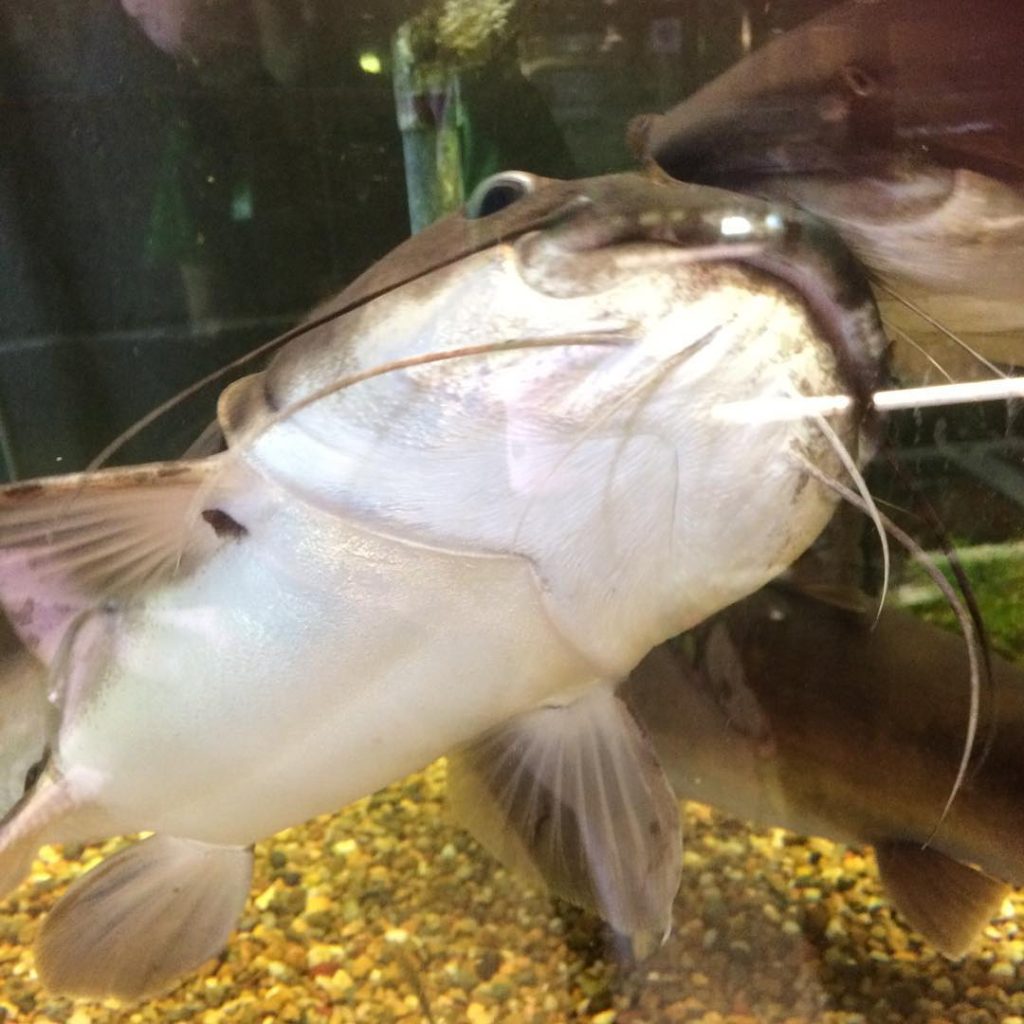
Salmontail catfish Tank Mates
Salmontail catfish, recognized scientifically as Arius graeffei or Neoarius graeffei, make a serene addition to sizable, well-structured community aquariums. Compatibility is key when choosing their aquatic companions.
These carnivorous catfish can safely coexist with other large and peaceful residents like medium to extensive tetras, barbs, non-aggressive cichlids, and heftier rasboras. It’s imperative to steer clear of smaller fish that might be unintentionally mistaken for a snack.
Robust bottom dwellers make excellent tank mates; this includes particular loach species, other compatible catfish, and tranquil cichlids that keep to the substrate. Aggressive or territorial species, however, should be avoided to prevent intimidation and preserve the peaceful dynamics of the tank.
Creating a harmonious habitat is key. Here are some essentials:
- Abundant hiding spots
- Defined territories
- Ample space to swim and forage
| Ideal Tank Mates | Tank Mates to Avoid |
|---|---|
| Medium to large-sized tetras | Small fish species |
| Barbs | Aggressive/territorial fish |
| Peaceful cichlids | |
| Larger rasboras | |
| Compatible loaches and catfish |
By adhering to these compatibility guidelines, Salmontail catfish and their tank mates can thrive together, ensuring a dynamic and visually engaging aquarium.
Aquarium Setup
Creating the perfect home for Salmontail catfish, known scientifically as Arius graeffei, involves more than just filling a tank with water and adding fish. The setup plays a crucial role in the health and happiness of these “Aussie monster fish.”
The basics of an aquarium setup for Salmontail catfish are straightforward but must be strategic because they strongly influence the well-being of the fish. A spacious tank is non-negotiable, as is a well-maintained filtration system to deal with their bio-load. Appropriate lighting and water parameters are also key pieces of the puzzle. Let’s dive into the specifics for each of these critical components to ensure that your Salmontail catfish thrives in its watery realm.
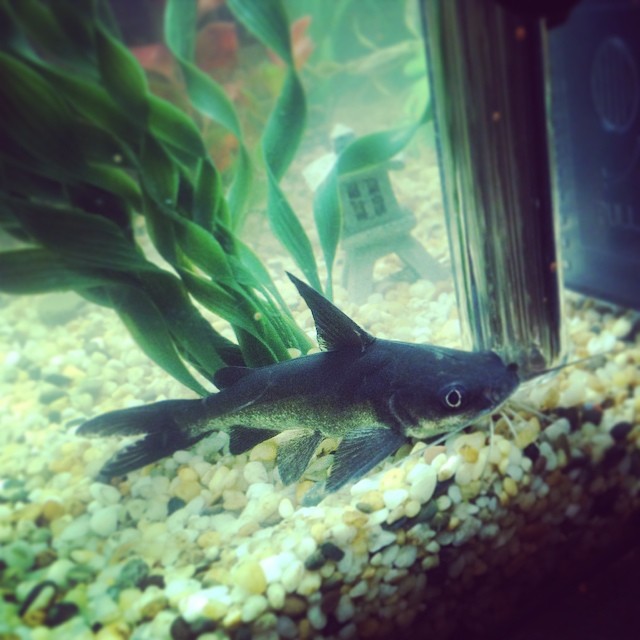
Ideal Tank Size
| Number of Fish | Minimum Tank Size | Recommended Tank Size |
|---|---|---|
| 1 | 30 gallons | 55 gallons |
| Group | 55 gallons | 75+ gallons |
Salmontail catfish command a generous amount of space and are not suited to cramped living conditions. For a single fish, the minimum tank size should be 30 gallons. However, considering their social nature, a 55-gallon tank is often advised as it facilitates the integration of a group. When housing several catfish, the tank size should be scaled up accordingly, with a 75-gallon or larger tank being ideal to avoid stress and territorial disputes.
Ideal Water Parameters
Maintain the tank water conditions within these parameters to provide a comfortable environment for your Salmontail catfish:
- pH level: 7.0 to 8.0
- Temperature: 72°F to 79°F (22°C to 26°C)
- Water hardness (dH): 8-12
- Ammonia: 0 ppm
- Nitrite: 0 ppm
- Nitrate: < 20 ppm
Adjustments might be necessary for keeping salmontail catfish with other species, ensuring that those conditions are equally tolerable for all tank inhabitants.
Filtration
Providing pristine water conditions through an efficient filtering system is non-negotiable. Salmontail catfish require robust biological and mechanical filtration due to the significant waste they produce. Canister or sponge filters are superior options for their tank setup. They offer quiet operation and cause gentle water movement, anticipating these catfishes’ preference for calm waters.
| Filter Type | Pros | Cons |
|---|---|---|
| Canister | High capacity, quiet, customizable | Bulky, requires space outside the tank |
| Sponge | Gentle flow, inexpensive | Less aesthetically pleasing |
Regular maintenance, including filter media inspection, is vital to ensure continuous, effective filtration and water quality.
Lighting
Salmontail catfish hail from environments where bright light is scarce. Thus, their enclosure should mirror these low-light conditions. Dim, subdued lighting not only aligns with their preferences but also contributes to their overall comfort. Low-wattage LED or fluorescent lights are advisable. These options allow for the simulation of gentle sunrise and sunset effects that replicate their natural habitat, reducing stress and promoting healthy behavior.
Remember, achieving the best conditions for your salmontail catfish involves careful planning and consistent care. By establishing the right aquarium setting, you pave the way for a healthy, active, and visually captivating fishkeeping experience.
Common Possible Diseases & Prevention
Health Management Salmontail catfish, like many freshwater species, can fall prey to diseases like Ich, fungal, and bacterial infections. Proactive measures can help shield these fish from illness.
Disease Prevention To prevent disease in Salmontail catfish:
- Maintain water quality: Keep the tank pristine with regular water changes and filter maintenance.
- Balanced diet: Offer a variety of high-quality fish food to keep your catfish robust and healthy.
- Avoid overcrowding: Give your fish plenty of space to reduce stress and aggression.
Quarantine Protocol Newly acquired fish can harbor diseases. Quarantine them for at least two weeks before joining the main tank to protect your Salmontail catfish.
Observation and Hygiene Regularly observe your catfish for signs of distress or sickness. Early detection aids in prompt treatment. Also, maintain aquarium cleanliness, including equipment and substrate, to minimize disease risks.
By upholding these preventative practices, you can foster a thriving environment for Salmontail catfish and enjoy their active presence in your aquarium.
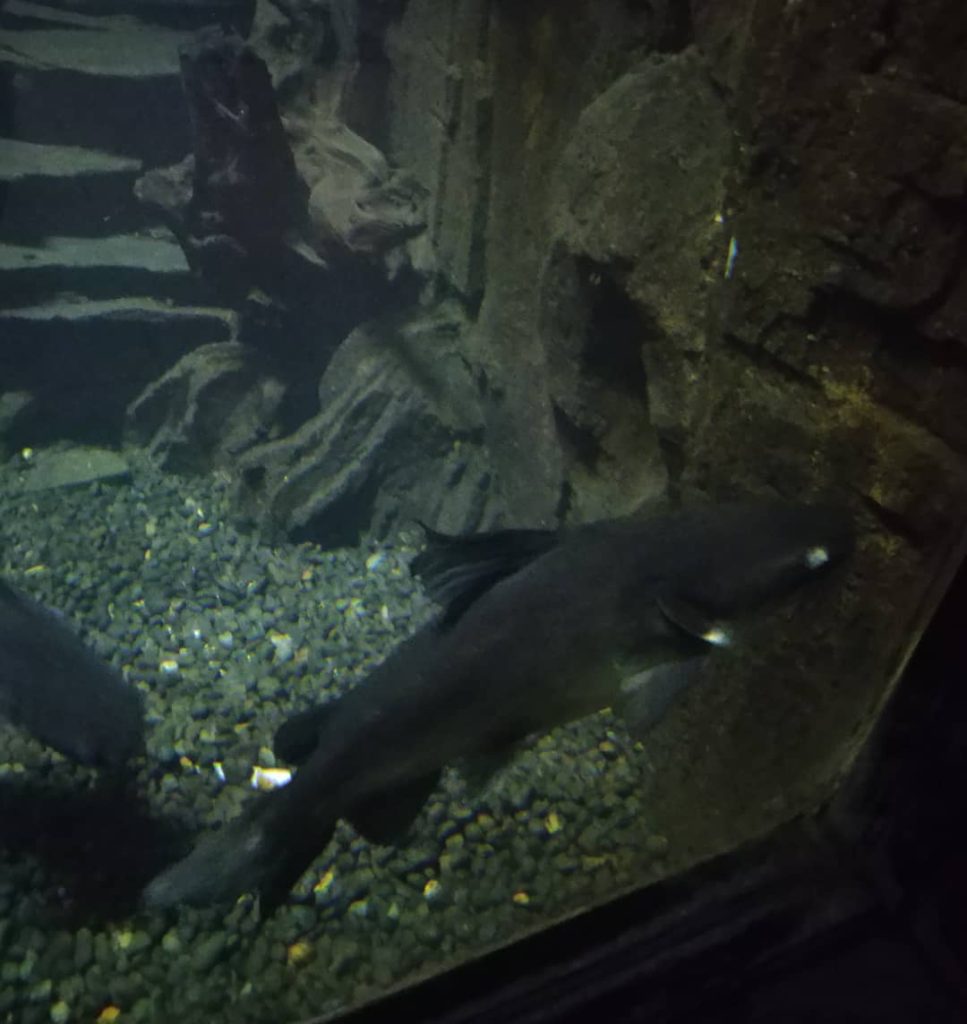
Breeding Salmontail catfish In Aquarium
Breeding the elusive Salmontail catfish, scientifically referred to as Arius graeffei or Neoarius graeffei, poses a significant challenge for aquarium enthusiasts. These egg-layers have garnered a reputation for their complex reproductive rituals, rarely seen within the confines of a fish container.
To stimulate spawning, one must meticulously adjust water conditions, closely mimicking their natural environment. Parameters such as temperature and pH levels become crucial, and providing an array of suitable spawning locations is paramount. The serene ambiance of their native habitat, often consisting of brackish conditions with plenty of concealment options, must be replicated to encourage their natural breeding behaviors.
Below is a quick checklist to aid in creating the right breeding setting for Salmontail catfish:
- Water Temperature: Within their preferred range.
- pH Levels: Consistent with their natural environment.
- Spawning Sites: Adequate and appropriate for egg-laying.
Despite these efforts, however, success is not guaranteed, making the sight of Salmontail catfish fry an exceedingly rare and rewarding spectacle for the dedicated aquarist seeking to witness the birth of these Aussie monster fish.
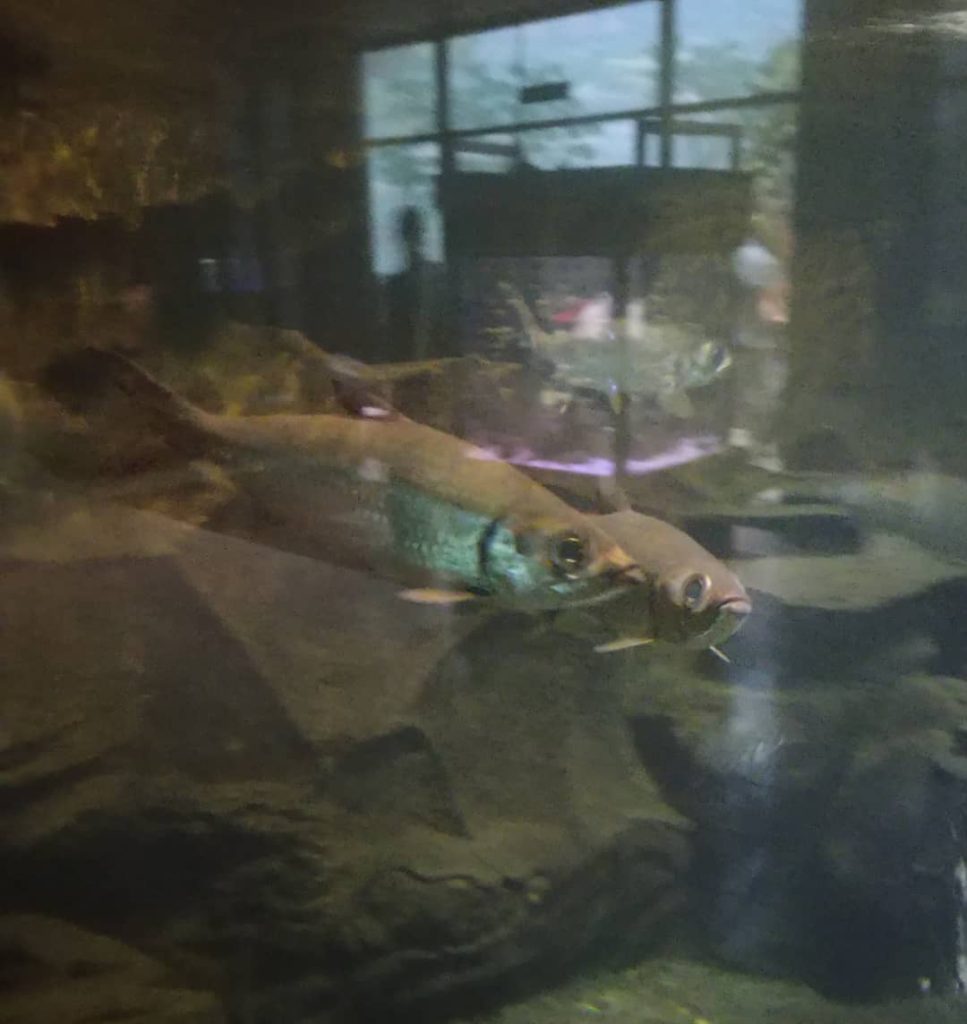
Are Salmontail catfish Easy To Keep?
Yes, Salmontail catfish are generally deemed easy to keep, especially for those who have some familiarity with maintaining aquarium environments. Their robustness allows them to endure a variety of water conditions, which could be appealing to new and seasoned fish keepers.
Key Attributes for Easy Care:
- Hardy Nature: Can withstand fluctuating parameters within an acceptable range.
- Diet: Carnivorous with a broad assortment of suitable food options easily found at any fish market or pet store.
- Community Friendly: Peaceful dispositions make them good neighbors for an active shoaling fish or other common sports fish.
Tank Size Consideration:
- Spacious Environment: Tanks should be no shorter than 6 feet to cater to their growth.
- Precaution: Handle these fish with care considering the sharp spines and potential skin irritants they possess.
By adhering to these guidelines, aquarists can enjoy the companionship of these Aussie monster fish with relatively low maintenance effort.
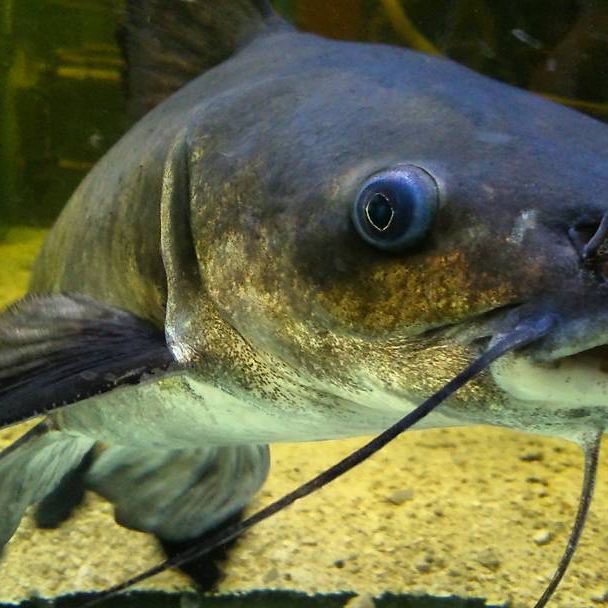
Are Salmontail catfish Sensitive To Water Changes?
Salmontail catfish show sensitivity to abrupt shifts in water parameters, underscoring the importance of stable aquarium conditions. Here’s how water changes can impact them:
Effects of Water Parameter Fluctuations:
- Stress: Rapid changes can trigger stress responses.
- Weakened Immunity: Constantly adjusting to new conditions may suppress their immune defenses.
- Acclimation: A gradual introduction to new water helps avoid shock.
Sensible Maintenance Practices:
- Regular Monitoring: Test water regularly to catch and correct issues.
- Gradual Changes: Make slow adjustments to water hardness, pH, and temperature.
By avoiding sudden environmental shifts, these fish can thrive and display their charming behaviors in a balanced ecosystem.
Are Salmontail catfish Sensitive To Ammonia?
The Salmontail catfish’s sensitivity to ammonia requires vigilant water quality management. Here are essential considerations for keeping ammonia in check:
Ammonia’s Impact:
- Respiratory Distress: Excessive ammonia levels could lead to breathing difficulties.
- Subtle Signs: Even at low concentrations, ammonia could compromise health, causing changes in behavior such as lethargy or surface gasping.
- Toxic Exposure: High ammonia levels can be fatal.
Prevention Measures:
- Testing: Regular water tests to detect ammonia build-up.
- Maintenance: Frequent water changes are vital to minimize ammonia.
Ensuring an environment free from ammonia spikes is imperative for sustaining the salubrious life of Salmontail catfish.
Are Salmontail catfish Sensitive To Copper?
Copper sensitivity in Salmontail catfish is a concern that demands careful attention in their aquatic habitat:
Copper’s Harmful Effects:
- Toxicity: Even low levels of copper can be toxic, disturbing their respiratory system.
- Avoidance: Refrain from using copper-based treatments.
- Equipment: Ensure no copper leaches into the water, checking pipes and equipment.
Proactive Protection:
- Water Testing: Monitor the water for any copper contamination.
- Safe Environment: Maintain a copper-free space to safeguard their well-being.
Keeping an environment devoid of copper is critical to ensure the health and longevity of Salmontail catfish in captivity.

